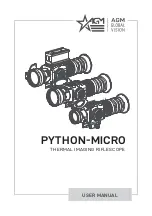
`
8
Figure 4-2
All stars appear to rotate around the celestial poles. However, the appearance of this motion varies
pending on where you are looking in the sky. Near the north celestial pole the stars scribe out
recognizable circles centered on the pole (1). Stars near the celestial equator also follow circular paths
around the pole. But, the complete path is interrupted by the horizon. These appear to rise in the east
and set in the west (2). Looking toward the opposite pole, stars curve or arc in the opposite direction
scribing a circle around the opposite pole (3).
M
M
o
o
t
t
i
i
o
o
n
n
o
o
f
f
t
t
h
h
e
e
S
S
t
t
a
a
r
r
s
s
The daily motion of the Sun across the sky is familiar to even the most casual observer. This daily trek is not the Sun moving as early astronomers thought, but the
result of the Earth's rotation. The Earth's rotation also causes the stars to do the same, scribing out a large circle as the Earth completes one rotation. The size of the
circular path a star follows depends on where it is in the sky. Stars near the celestial equator form the largest circles rising in the east and setting in the west. Moving
toward the north celestial pole, the point around which the stars in the northern hemisphere appear to rotate, these circles become smaller. Stars in the mid-celestial
latitudes rise in the northeast and set in the northwest. Stars at high celestial latitudes are always above the horizon, and are said to be circumpolar because they never
rise and never set. You will never see the stars complete one circle because the sunlight during the day washes out the starlight. However, part of this circular motion
of stars in this region of the sky can be seen by setting up a camera on a tripod and opening the shutter for a couple hours. The timed exposure will reveal semicircles
that revolve around the pole. (This description of stellar motions also applies to the southern hemisphere except all stars south of the celestial equator move around the
south celestial pole.
Figure 4-1
The celestial sphere seen from the outside showing R.A. and DEC.
Starts seen near the north celestial
pole
Starts seen near the celestial
equator
Starts seen looking in the opposite
direction of the north celestial pole





























